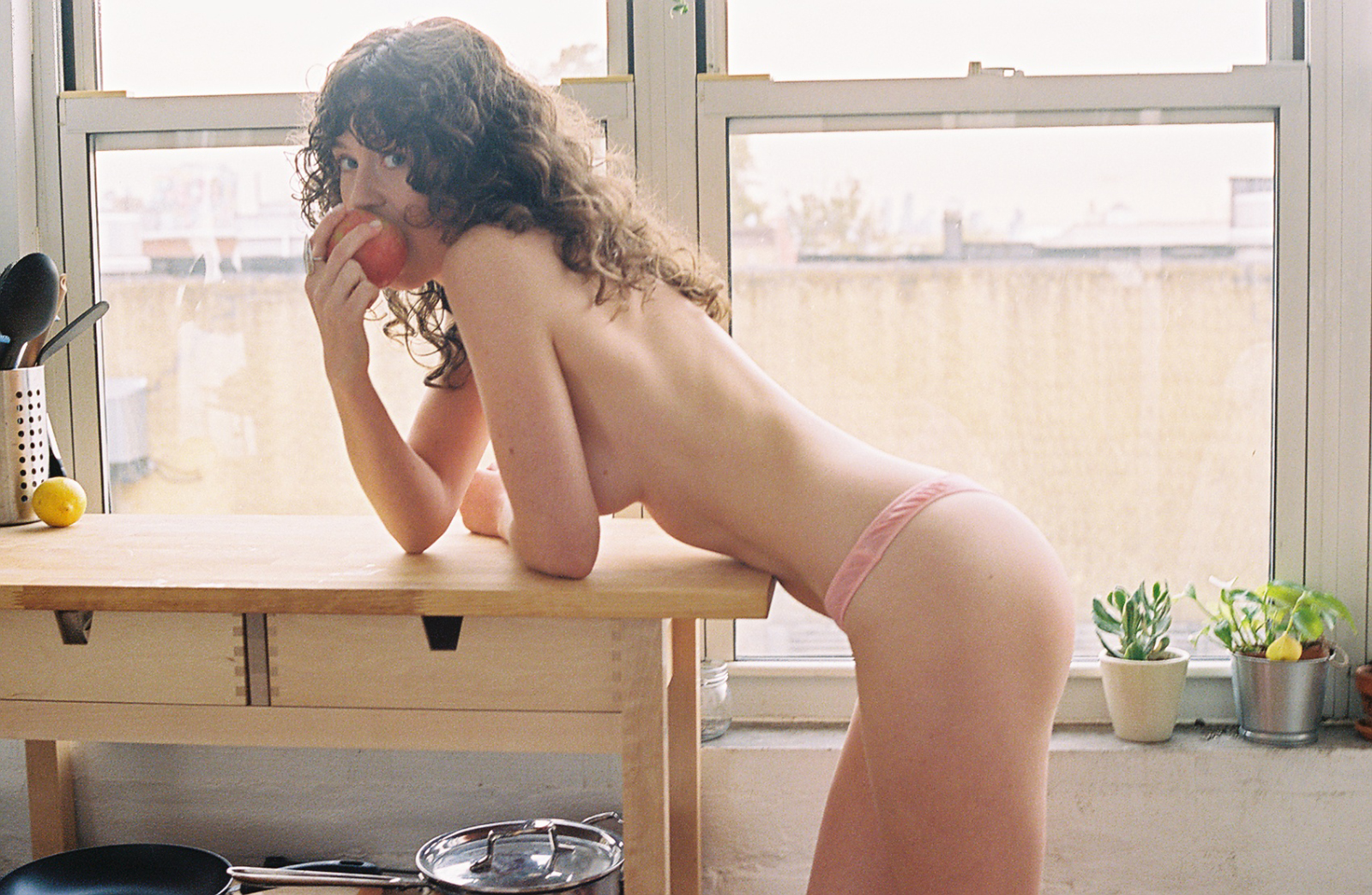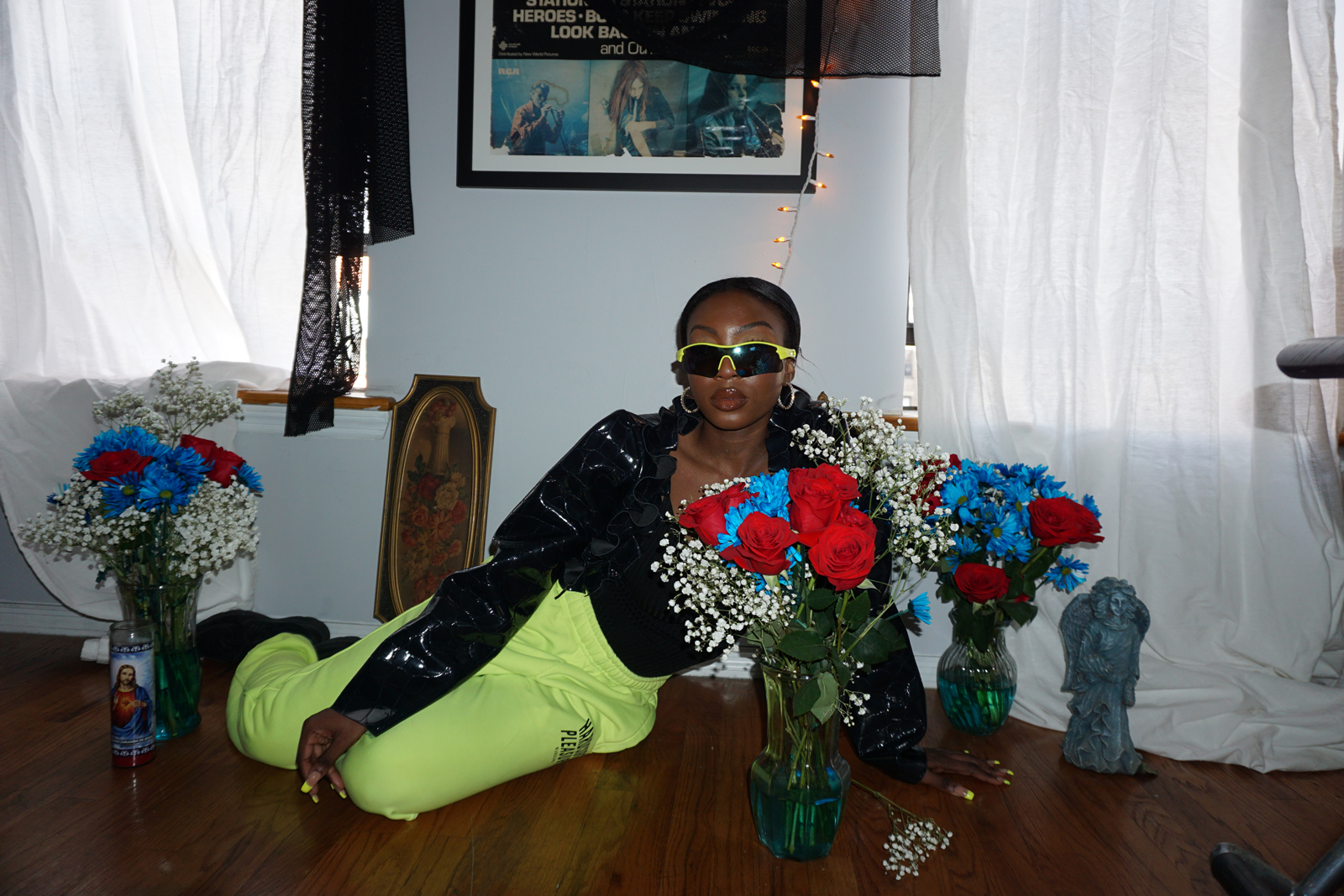Photos: Kat Slootsky
Text and Interview: Monica Uszerowicz
To view the work of Christian Joy is, initially, to enter an absurdist Kabuki Candyland. All of it (large-scale installations, costumes, flatwork, plush sculptures, and, most importantly, the arrangement of each) is sumptuous and explosive, super-sized and softly-shaped. Gaudy tinsels mix with pink zebra stripes; pillowy hands descend from a ceiling while dancers clad in chromatic rainbows reach for them from below (a feature from her exhibition Bok Joy, which was part of Anxious Spaces: Installation as Catalyst, at the Knockdown Center). It’s dizzying—delightfully—and everything seems a little bit edible.
But this is only a small, particularly bright part of her oeuvre. Though Joy may have become a costume designer for her friend Karen O mostly by accident, it was a lucky kind of serendipity: her work is best seen in motion. She has since gone on to create looks for Santigold, Oh Land, and Brittany Howard of the Alabama Shakes, and to present her work in mediums that don’t require a human body. Still, though, it is her costumes and styling where she is at her most resplendent—and diverse, too. In Marcel Dzama’s Une danse des bouffons, which starred Kim Gordon and was screened in black-and-white, Joy clothed the actors in the creepiest of surrealist garb, and there is nary a color to be seen. In short films for design studios like Mogollon and photographers like the duo Ioulex, Joy’s styling, and patterning recalls the sharp-lined avant-garde silhouettes of bygone eras. She’s got a kaleidoscopic palette, and we were happy to speak to her about where it all came from. See below.
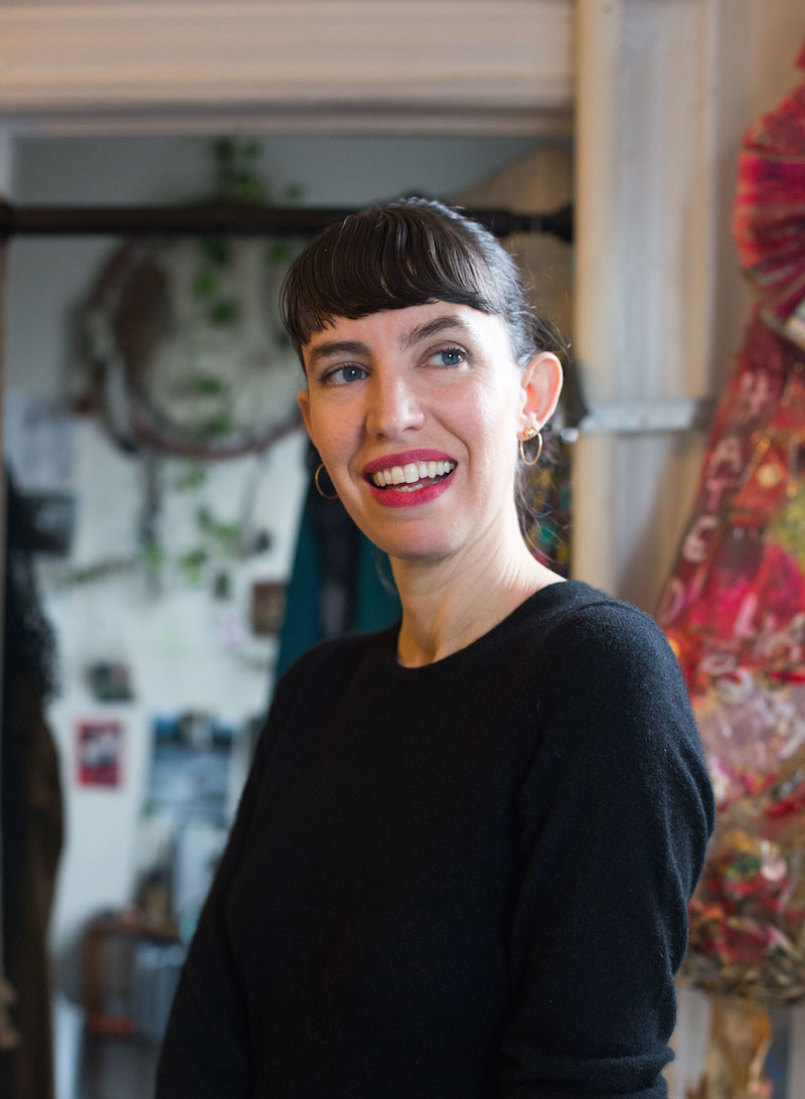
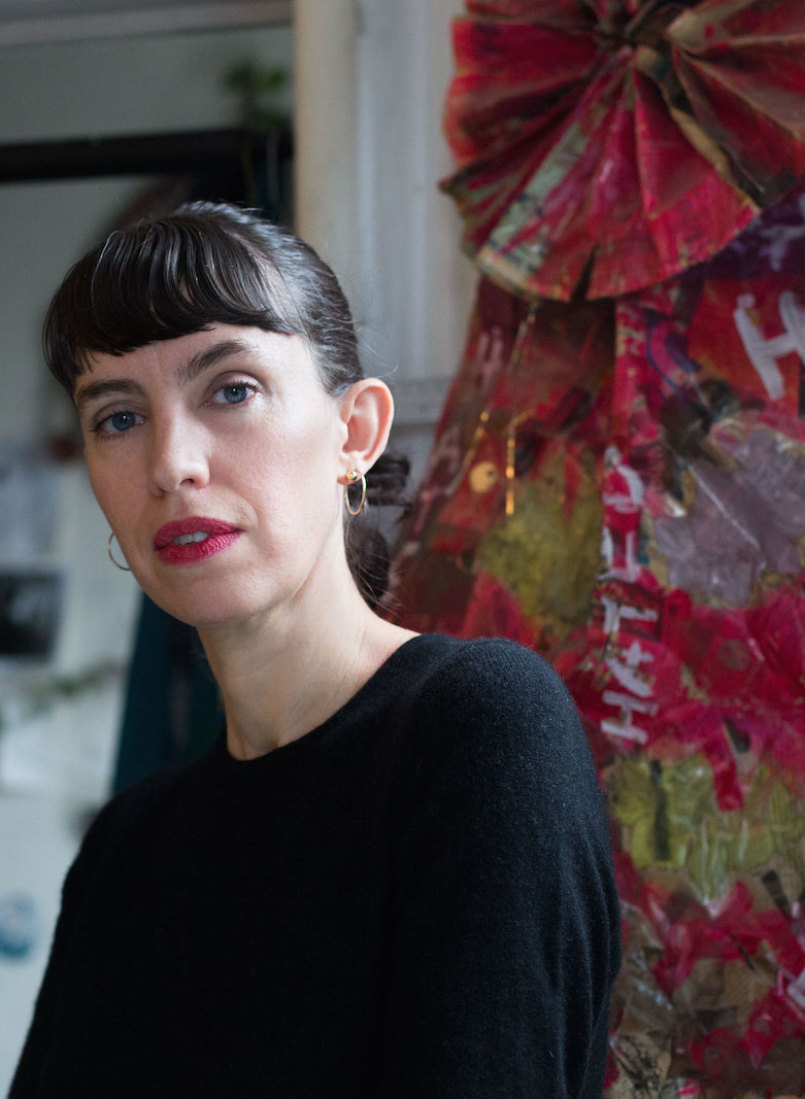
Some stories about you trace the origins of your career to your work with Karen O. When did you start designing clothing?
It actually began about a year after I had moved to New York in 1999. I worked in a clothing store called Antique Boutique, which carried a lot of small designers. My friend and I used to stand in the store and sarcastically say, “Oh, I could make that” about many of the clothes. Finally I decided that instead of standing around and judging other people’s designs, I should try to make my own.
I began by making hand-painted T-shirts and then eventually moved on to prom dresses, which I would shred up and staple back together. After a while, I decided that I should learn pattern-making, sewing, and fashion history, so I bought a lot of books and taught myself. I met Karen O about a year later.
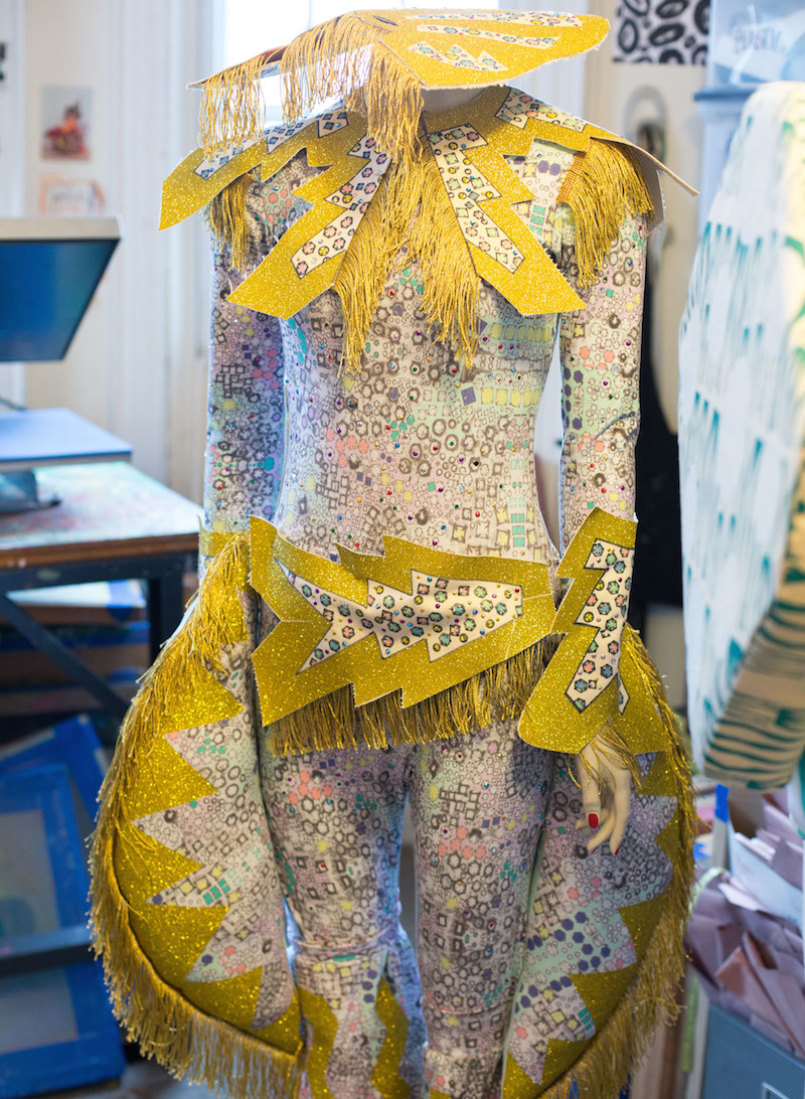
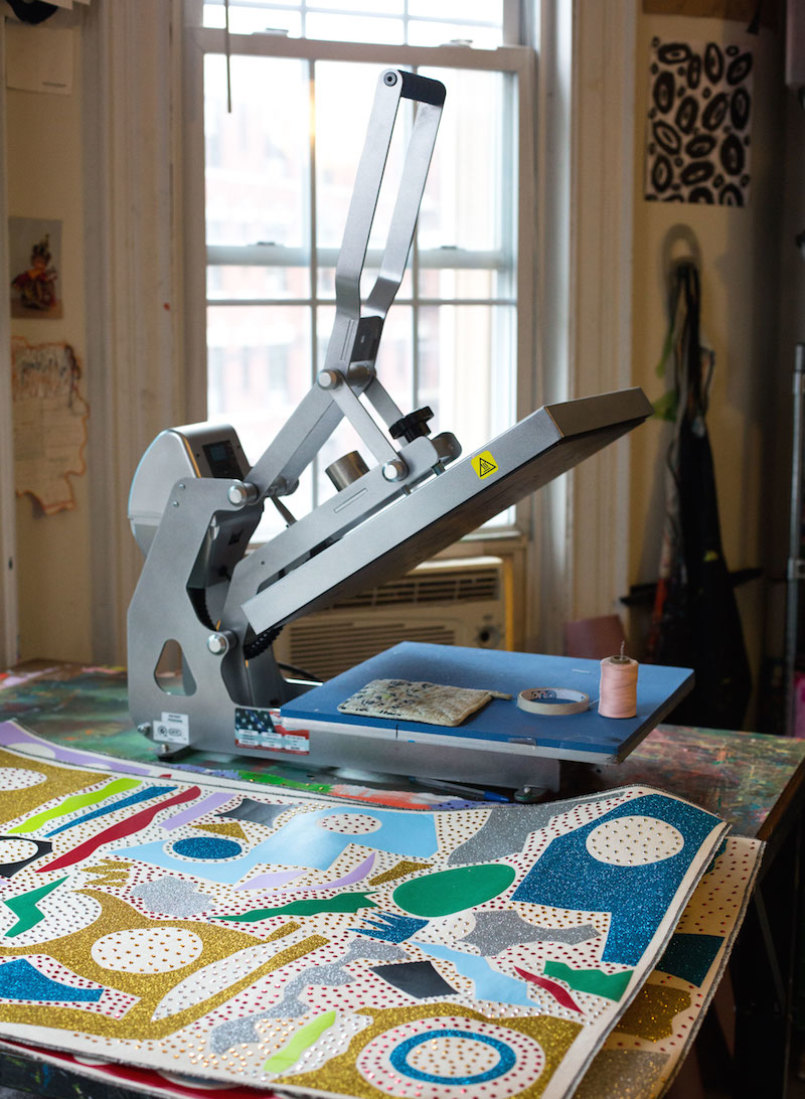
You frequently work with friends and other artists. Do you enjoy working this way? Are the parameters that come with working collaboratively helpful to your process?
Yes, I love it! I’ve had the chance to work with so many excellent artists. I think what’s worked so well about each of these relationships is that while you do have parameters, each person really does their own thing. No one is saying, “Oh no, you can’t do that.” It’s more, “Well, don’t forget that the wall is white or that my favorite pose is like this or listen—that spike on the side is poking me.”
With Karen, we’ll send images back and forth as inspiration and then I’ll take off from there. She usually doesn’t know what she’s getting until it’s sent. That process has turned out to work well, but I have to admit that with others, I do enjoy having them tell me what they’re thinking before I begin drawing up ideas. Sometimes too much freedom can be in itself limiting.
Your work is very distinct and very much your own, but it also spans a massive swath of color, design, and medium. From where do you draw your inspiration?
New York City is a constant source of inspiration. There is always so much happening, so it can be anything from people I see on the street to art I see in museums and galleries. I also get really inspired by books. I just read the Grace Coddington book [Grace: Thirty Years of Fashion at Vogue], which was great. It’s just nice to hear about how she started out and how she’s moving forward in her career. Same with the Kim Gordon memoir [Girl in a Band]. As I get older, I find that I draw more inspiration from the way people live their lives.
You are likely usually busy, but when you aren’t working, how do you still engage with your creative self? Do you take in images or books that inspire you?
I usually just take a lot of pictures. I love Instagram. I find so many great images and I keep them stored on my phone. I find that if I put them on my computer, I forget about them. I used to write a lot but not as much anymore, which in a way is a little bit sad. I like to imagine there is a giant file cabinet in my brain where the best ideas are stored. I always feel like if I don’t remember the idea, then it probably wasn’t really worth it.
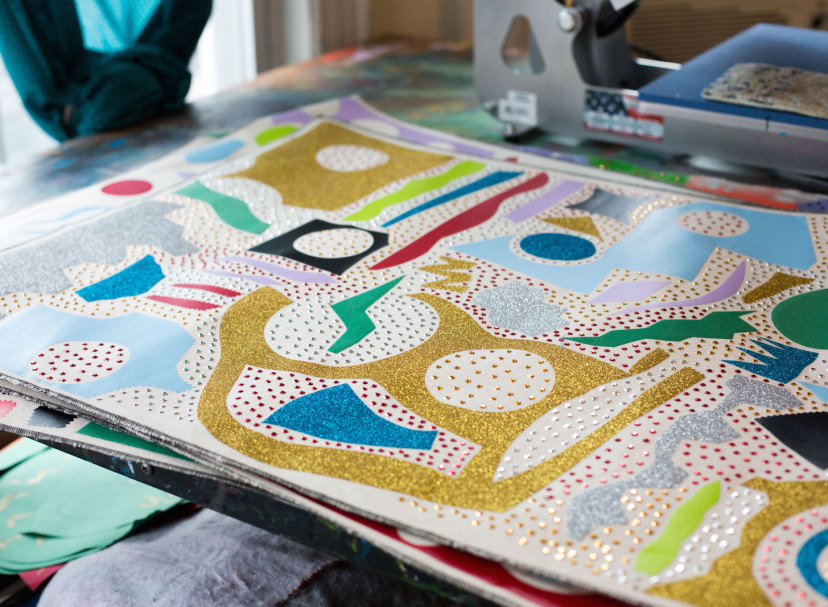
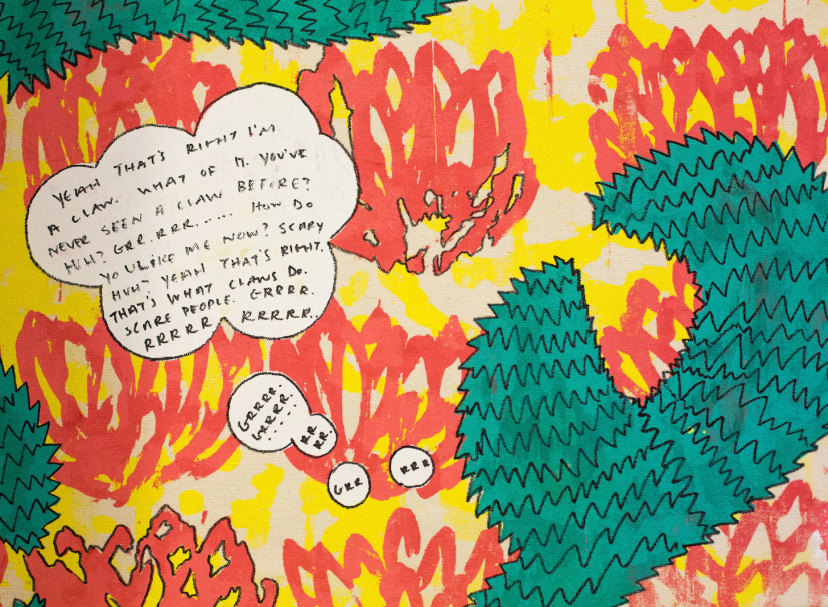
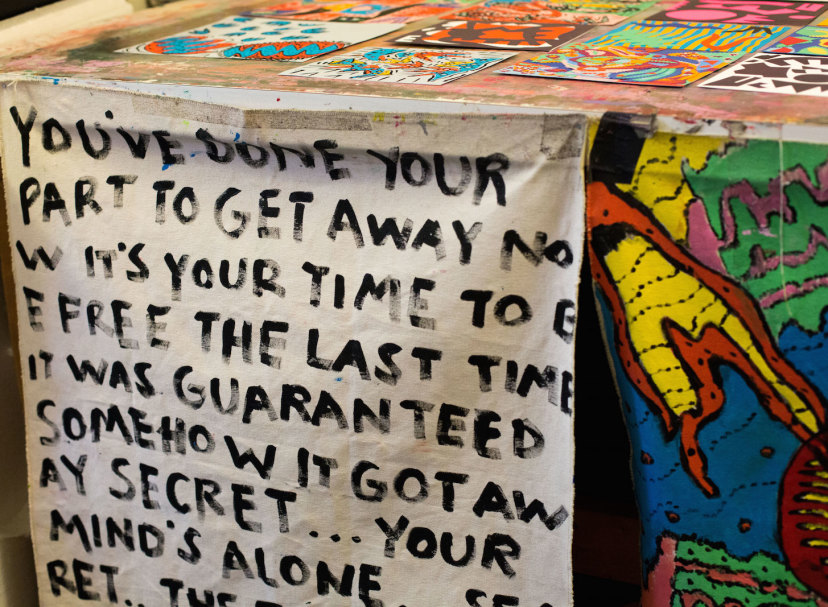
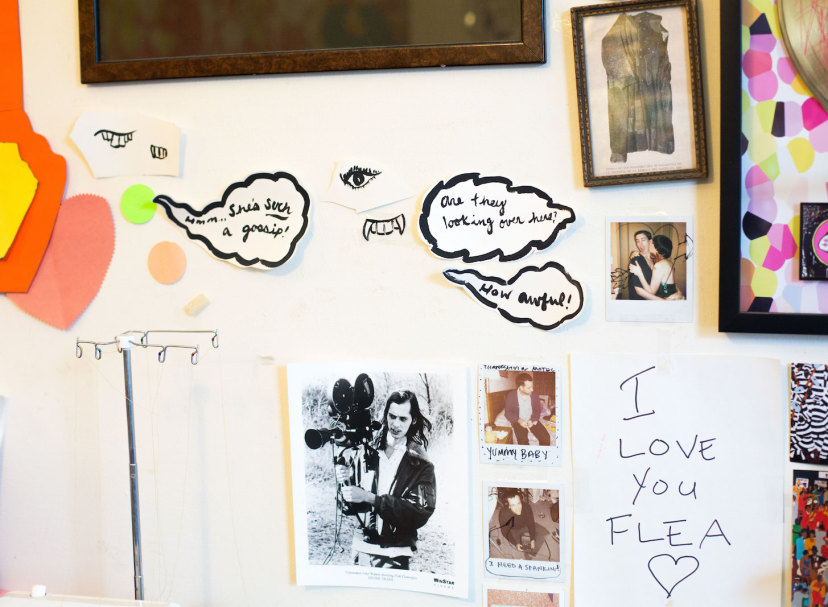
Your costumes communicate with the human form in an intuitive way. It seems you have an innate understanding of the language of the body without being a performer yourself. Can you talk to me about the development of your interest in this kind of performative movement?
It probably really began with Karen. I just began to notice her poses and became really interested in the reaction of the audience to them. I think my understanding comes from being a fan and the psychological effects that a movement can have on you. I want to highlight it and make it even more spectacular if I can. Also, [this understanding] has just come from talking to performers and hearing their woes.
How do you relate to the fashion world? You’ve been spotlighted and mentioned in articles that talk about the fashion of certain iconic moments in time, particularly because of your work with Karen.
I love fashion so much and I think I could be part of it in a way, but I feel like my ideas are never as refined as they need to be. I like working in a pretty clunky way using unusual materials, without concern for it being pretty or nice. I like thinking about performers and not just the girl on the street. I also feel like you can be more creative when you’re not restricted by the rules of fashion. I have to say that, recently, I’ve seen some pretty outstanding pieces by new, young designers that are so extraordinary and walk the line between fashion and costume. I personally would love to wear these pieces, but most people would not, so there is not a huge audience for them. I feel like my work is probably similar. Fortunately, I’ve found an excellent output for my designs.
